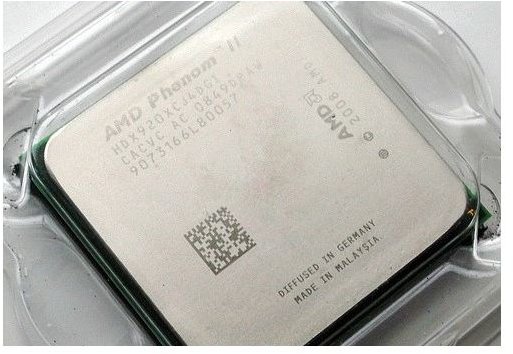AMD Phenom II X6 Preview
The Core Battle
A decade ago the battle of processors revolved around clock speeds. AMD and Intel competed against each other viciously by constantly working to create processors with a higher number slapped on the marketing material. The battle was a little bit deceiving, because performance-per-clock was different among different processors. However, the clock speed was the only clear, easy to understand measure of performance, so clock speeds took priority.
Now it seems a similar battle is developing when it comes to the number of cores. First two, then four, and now six with rumors of eight or twelve core products being designed. AMD’s Phenom II six-core products are of course being labeled with the X6 name. But how will these processors compare to the existing Intel Extreme Edition 980X?
The Basics
Perhaps the most surprising fact about AMD’s Phenom II X6 products is that AMD is boasting some very high clock speeds. The highest level part, the Phenom II X6 1090T, is to have a base clock speed of 3.2 Ghz. That is very fast for a six core part, while it is no faster than the Intel Extreme Edition 980X, it should be noted that AMD and Intel tend to work in opposite directions. Intel tends to release an Extreme Edition part and work down from there, while AMD’s first parts usually represent the most basic version of the processor.
As such, the Phenom II X6 1090T isn’t the only part that AMD will be releasing. AMD will also be releasing the Phenom II X6 1075T, 1055T, and 1035T with respective base clock speeds of 3Ghz, 2.8Ghz, and 2.6Ghz. This provides a wide range of options which will also hit a wide range of price points.
Turbo Comes to AMD
You’ll note that I used the term “base” when describing the above clock speeds. That is because AMD is now going to have a turbo feature as well.
Called Turbo Core, the technology from AMD is a little bit of a hack job. The architecture they are using was not designed with Turbo in mind line Intel’s current Nehalem based Core i processors, so AMD’s Turbo Core is not very flexible. It activates when three or fewer cores are being used and then overclocks the cores which are being used by up to 500Mhz. Unlike Intel’s Turbo Boost, the AMD system is also said to be based purely on processor demand rather than on processor temperature.
This solution isn’t ideal for a number of reasons, not least of which is that the inactive cores are not turned all the way off but rather have their speed reduced (rumor has it that inactive cores will run at 800Mhz). This means that we can expect the power consumption of AMD’s six core processors to be much higher than Intel’s products. Also, this seems to be a solution with limited implementation as of current. It is doubtful we’ll see this in AMD’s dual core notebook processors, for example.
Expected Performance
The performance increases from AMD’s new X6 processors should be relatively similar to those found with the Intel Extreme Edition 980X. This is not to say the X6 processors will match the 980X, but compared to the AMD Phenom II X4 line we should see performance increases in similar programs.
What this means is that, realistically, games and day-to-day productivity applications will not see a major performance increase, but processor intensive applications like video en/decoding, 3D rendering, and file encryption will receive a substantial boost. Also, the Turbo Core technology will result in a small performance increase - perhaps 10% or so - in all applications.
Pricing and Compatibility

Since AMD can’t currently compete with Intel in terms of absolute performance the company instead has to find other ways to fight the giant. For the most part, this means better prices and better compatibility.
AMD states that these new processors will work with all current AM3 and AM2+ based motherboards after a BIOS update. There is no reason to believe that this won’t be the case, as the Phenom II X6 processors will fit in the same socket and don’t have power requirements which are greater than some current Phenom II X4 processors. What is less clear is how the Turbo Core feature will work. The slides from the AMD presentation on the X6 products seem to indicate that Turbo Core will only work with AM3 motherboards.
Pricing of the Phenom II X6 processors should be very competitive. Current pre-order prices across the globe are showing prices of around $300 to $350 for the top-of-the-line Phenom X6 1090T. The lower-end products may be as little as $200.
We should know true pricing and availability in early May. There have been rumors that some products already up for shipping, but it is likely that some retailers are jumping the gun. Even so, this is a good indication that the X6 products will officially ship sometime in May.
